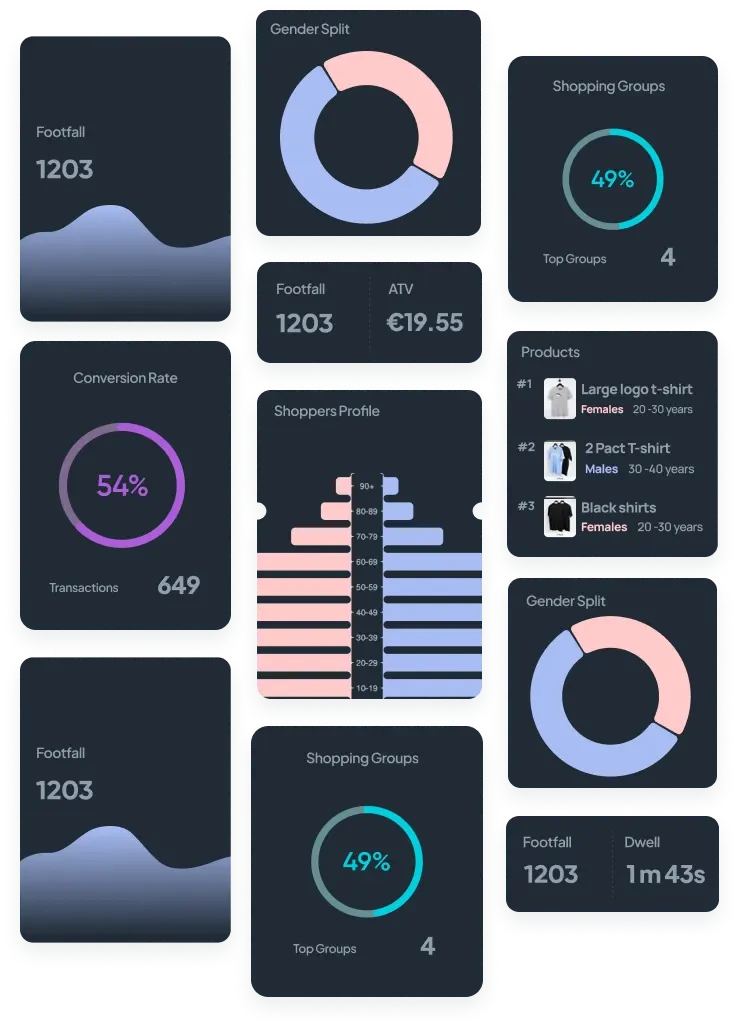What Do Retailers Want From AI?
Keith Monaghan
November 29, 2023
When retailers are asked about what they want from AI, the answer tends to be quite simple. They want to make their stores smarter, boost efficiency, and increase sales. These were the conclusions of a recent Honeywell report published in August 2023.
Over 1,000 Retail Directors, IT and Customer Service heads of departments were surveyed across Europe, the USA, Africa, and the Middle East, and nearly 6 out of 10 participants stated that they planned to adopt AI, machine learning, and computer vision in the latter half of 2023.
Surveyed retailers agreed that they would be inclined to use new technologies like AI, if they can help them to achieve their goals. The top three reasons for implementing new technology were:
- Improving Customer Experience (59%)
- Driving Greater Productivity (49%)
- Achieving Cost Efficiencies (44%)
It’s all well and good to aspire for better customer experience, staff productivity, and achieving a return on investment, but what does that look like in terms of AI and where would a retailer even start?
Audience Profiling
The first thing a retailer can do is to profile their actual audience and differentiate their shopper (or browser) from the customer (or buyer). AI can now be used to segment shoppers into their respective buying groups, making it easier for retailers to understand their largest and lowest spenders by profile.
If a retailer examines their buying metrics, they can then choose to stock products that appeal to the already highest spenders or conversely, they can decide to act on the profiles of browsers that are high in number but not high in sales.
They may find that store locations in one city have completely different demographics of shoppers to a store location in another. Yet, if the stores are vending largely the same types of stock, they could be losing out on additional sales from certain key buying profiles.
Staff Optimisation
Retailers with a large estate of stores will also have a large number of staff to perform a number of back office and customer facing roles. Many staff will also have dual roles which take them away from the floor.
Knowing when stores are at their busiest, will allow retailers to assign tasks effectively, in a way that doesn’t leave them short-staffed. It’s fair that retailers may currently make assumptions on the busiest times based on experience, but the ability to see in black and white, which locations are busy at which times, will ultimately save a retail time in staff rostering and task delegation.
Ad Campaign Effectiveness
John Wanamaker of Macy’s Department store fame is credited with saying “Half the money I spend on advertising is wasted; the trouble is I don’t know which half”.
This phrase still resonates in the world of marketing today as there are enormous information gaps when companies launch a localized or national advertising campaign. They will get all sorts of metrics for their online ads, but they have no way of understanding to what extent an advertisement has been successful at attracting their targeted demographics into physical store locations.
The most common way to measure ad effectiveness is through sales (ie. Did our sales improve post ad campaign?) But this does not answer any other questions about whether the ad drove product engagement in the stores themselves or attracted new demographics. It also does not shed light on the potential revenue a store could have made on a given day, or how worthwhile the ad was overall to the business.
In-Store Ad Effectiveness
In-store advertisements can be overlooked; however, it is one of the most clear and obvious forms of integrating AI in a physical store. What’s the use of having an ad for a product in-store if that product has been sold out for weeks, possibly months.
The sparkling wine producer, Rotkäppchen-Mumm, have ingeniously opted for in-store ads that correlate with their shelf availability. The signs content syncs up with sales data to ensure a product that is nearly sold out, does not get any screen time. Oftentimes, the smartest uses of AI can be the simplest.
There were also concerns or barriers to the adoption of AI which came up in the Honeywell report, where retailers expressed their main reasons, they would be hesitant to introduce AI, or any new technology for that matter. The main three barriers were highlighted as:
- Budget restrictions (39%)
- Difficulty in demonstrating business value (29%)
- Lack of internal expertise to maintain the technology (21%)
What this seems to equate to is a fear of implementation or of stepping away from the status quo. It’s understandable that there would be a fear of misspending company money, being able to show colleagues the value of the AI technology, or being responsible for training in staff in how to utilise the new AI product.
A solution to this is to ensure that any AI product a retailer is considering comes with things like on-boarding and support included, where the artificial intelligence is catered for or looked after by a partner company, who will deliver that data in context sensitive ways, to specific strata of company management. With a company that acts as a partner, a lot of these barriers or fears for retailers will be quashed.
It’s clear from the Honeywell Report that retailers are not necessarily scared of AI as a concept in and of itself, but they are wary of how to get the best out of it. Considering AI has only really come to prominence in the last decade, experienced retailers will want to know that their operation has the budget and means to take on any transformational projects.
Get Started
What Gets Measured, Gets Managed!
VisionR mines data directly from shoppers as they navigate stores, empowering retailers with real-time insights to maximise their decisions & revenues.
